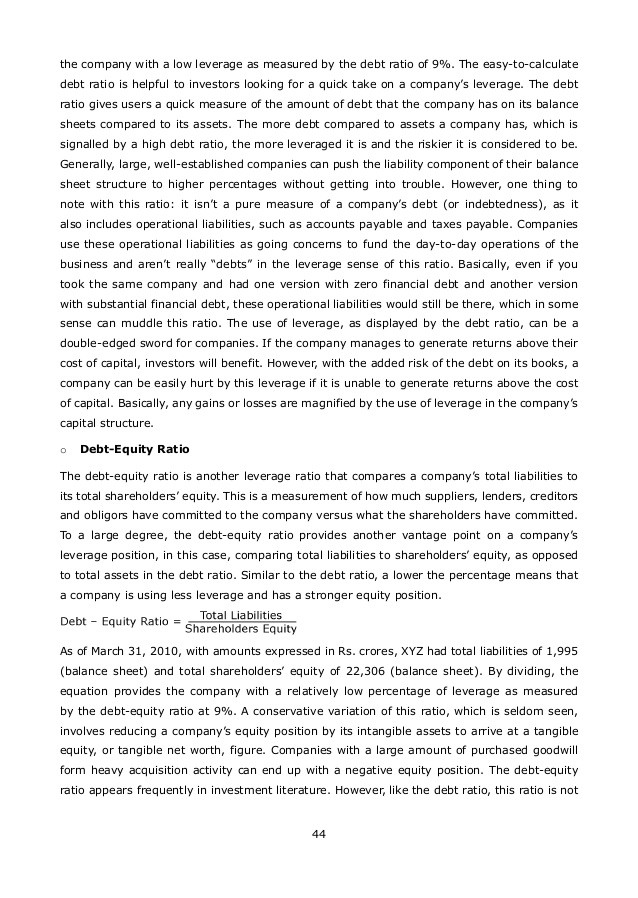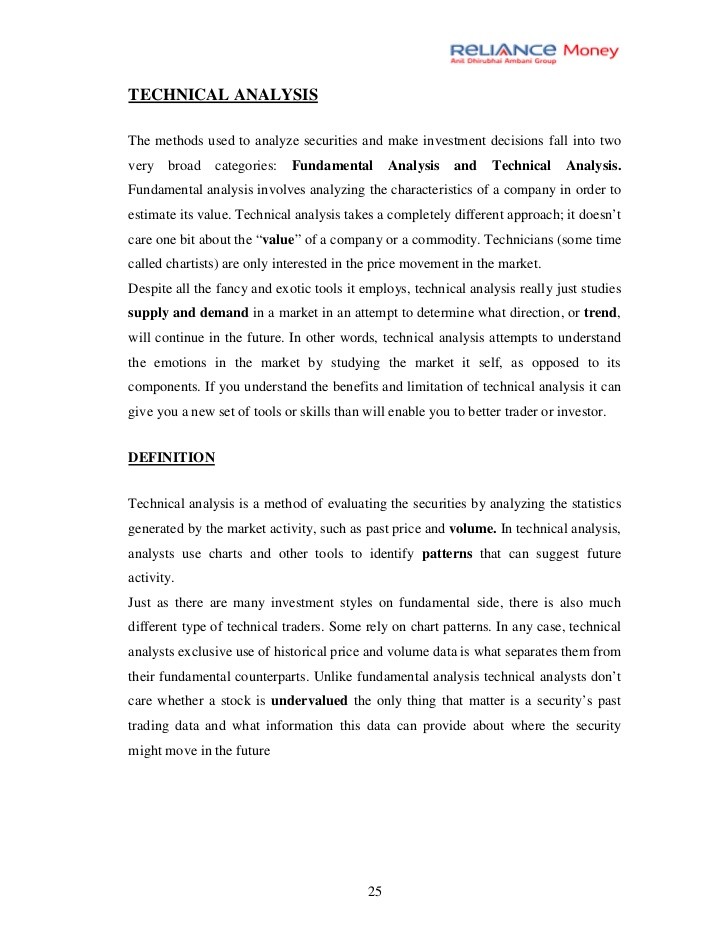FinanceInformation How to perform stock research using fundamental analysis
Post on: 9 Июнь, 2015 No Comment

Tuesday, October 28, 2008
How to perform stock research using fundamental analysis
Performing stock research is tedious task but you will be surprised to see how quickly you can do once you do it for 2-3 times.
In this article, I will try to provide various parameters mainly related to fundamental analysis (which I believe is backbone of investing) to perform stock research. I have specifically kept in mind that this should be easy to calculate stuff from balance sheets and profit/loss statements, as main target audience for this article is retail investor. And, I will be focused on company research only, not on industry outlook.
This is relatively big article, so if you dont have time now then bookmark it or print it and read it out later.
Why do I recommend performing through analysis before investing:
- Relatively less stress, when things are not going right in market. As, you know reasons behind your investment decision. In case of any failure, one can at least know what went wrong and take priceless learnings from it. I am firm believer that if you need to put 10 minutes to earn Rs. 100 then investing Rs. 100 deserves at least 1 minute (10%) of your time. Great wealth can be achieved by only un-earned income and investing is probably the most easiest way to generate un-earned income.
What is Fundamental Analysis?
The main goal of fundamental analysis is to find out intrinsic value of stock, means primary assumption for fundamental analysis is that the price on the stock market does not reflect the true value of stock (share). In a nutshell, focus of fundamental analysis is to determine true value of stock by focusing on various factors like growth, companys actual business, companys financial strength and its future prospects.
How to perform fundamental analysis?
I will like to break fundamental analysis mainly in three parts:
- Financial stability ratios Performance indicators Valuation parameters
Broadly speaking, fundamental analysis should be performed at least for past 3 years (more you go, better it is).
In addition to this analysis, there are some other things to look at, which I have mentioned at the end of this article (in conclusion section).
1. Financial stability ratios:
These ratios are useful to check inherent financial strength of company and its cashflow patterns.
a) Debt-Equity ratio:
Debt-Equity ratio = Total Liabilities / Total Share Capital
This ratio provides leverage situation of company in the sense that it compares companys total liabilities to total shareholder equity.
Broadly speaking, it should not be much higher (should not be greater than 2 or 3, there are exceptions like financing stocks)
b) Interest Coverage ratio:
Interest coverage ratio = Earnings before interest and Tax (EBIT) / Interest
This ratio indicates how easily can company pay interest on its outstanding debts. Warning signs are triggered when this ratio become less than 2.
c) Current ratio:
Current ratio = Current Assets / Current Liabilities
This ratio indicates companys liquidity condition, in terms of paying of short-term liabilities from its short-term assets.
Warning signs are triggered when this ratio becomes less than 1 and be cautious if this ratio is less than 1.5
2. Performance indicators:
These ratios are useful to check performance of the company.
a) Operating Margin:
Operating Margin = EBDIT / Net Sales * 100
EBDIT indicates Earnings Before Depreciation, Interest and Taxes. This ratio indicates net profitability of the operation of the business.
b) Gross Margin:
Gross Margin = EBDT / Net Sales * 100
EBDT indicates Earnings Before Depreciation and Taxes. This ratio indicates Gross profitability of company (margin after paying interest).
c) Net Margin:
Net Margin = Net Profit / Net Sales * 100
Net Profit is derived after depreciation and payment of interest and taxes. Higher the margin better it is.
d) Return on Assets (ROA):
ROA = Net Profit / Total Assets * 100
This ratio indicates how profitable the company is relative to its assets and ability of management in generating profits from assets.
e) Return on Equity (ROE):
ROE = (Net Profit Preferred Dividend) / Total Share Capital * 100
This is perhaps Warren Buffets favorite parameter. This ratio provides percentage return on shareholders equity.
f) Return on Capital Employed (ROCE):
ROCE = Net Profit / (Total Debt + Total Share Capital) * 100
This ratio indicates how profitable the company is relative to total capital employed and ability of management in generating profit out of it.
g) Sales Growth:
Sales Growth = (This Years Sales / Last Years Sales 1) * 100
As name indicates, this ratio Net Sales (revenues, top-line) growth. Above formula will provide YoY (Year on Year) sales growth, similar way we can find Half yearly sales growth and QoQ (Quarter on Quarter) sales growth.
h) EBIT Growth:
EBIT Growth = (This Years EBIT / Last Years EBIT 1) * 100
This ratio provides growth percentage in EBIT (Earnings Before Interest and Taxes) term.
i) PAT Growth:
PAT Growth = (This Years PAT / Last Years PAT 1) * 100

PAT indicated Profit After Tax (Net Profit).
j) EPS Growth:
EPS Growth = (This Years EPS / Last Years EPS 1) * 100
EPS indicates Earnings Per Share.
k) BV Growth:
BV Growth = (This Years BV / Last Years BV 1) * 100
BV indicates Book Value.
3. Valuation Parameters:
First of all, valuation ratios are related to CMP (Current Market Price). So, they are quite volatile in general. As someone rightly said profits are made when you buy and not when you sell, so in that regard valuations are key.
But in general, valuations have significance after particular stock is passed through criterias of above two sections. (sometimes its easiest to ignore any scripts just on the basis of valuations like, 100 PE stock with only around 15-20% growth)
a) PE:
PE = CMP / EPS
PE Price to Earnings, perhaps the most looked parameter. In general, stocks with higher forecast earnings growth will have higher PE and those expected with lower earnings growth will have lower PE.
b) P/B:
P/B = CMP / BV
P/B Price to Book, very important ratio for value investors (historically, these group of investors have made most money out of stock market).
c) Dividend Yield:
Dividend Yield = Dividend per share / CMP
This indicates dividend return in percentage terms of total investments.
d) PEG:
PEG = PE / Earnings Growth
PEG PE to Growth, Peter Lynchs parameter. This ratio provides relative values of PE and growth projections.
e) PES:
PES = PE / Sales Growth
PES PE to Sales Growth. My own finding, as I believe that to increase earnings in long term, sales have to improve (only profit improvement may not work in all cases)
In conclusion:
There are mainly three aspects of fundamental analysis: financial stability ratios, performance indicators and valuation parameters.
Some Miscellaneous Notes:
- Quality of management. As a retail investor, its difficult to judge quality of management. I generally tend to look at ROCE, ROA and MF holdings. I request readers to let me know through comment/emails, if there are any other better ways. Order Book. I havent mentioned regarding order book in this article. Again, I request readers to let me know through comment/emails, if there are any better ways. Earning estimates. I tend to look at ICICI Direct for that. This point is specific to Indian equities. As stated above, I havent talked about industry outlook and broadly speaking, stock prices are hugely dependent on industry performance. Peer competition (competition between companies in same sector) is not considered here. Take a look at share capital, and if that is increasing then be extra careful, as ROE will be affected by increased share capital. Shareholding pattern is fairly important thing to look at. Mainly three things: promoter, institutions (DII and FII) and retail holdings. Broadly speaking, its good to have high promoter holdings and if retails holdings are high then stock will not perform well. Secured loans and unsecured loans in balance sheet. If unsecured loans are high, then be extra careful as it will require to pay more interest (and other question comes as, is the company desperate for funds?) I tend to look at whether MFs are dumping that stock and if yes, then why? Be cautious when you see high other income in profit/loss statement. Many of above mentioned ratio can be found directly calculated at India Infoline. This point is specific to Indian Equities. After seeing October-2008 carnage in emerging markets, I will like to add one more parameter and that is FII holdings in stock. Some cautious words: Dont always believe what you see in balance sheets and profit/loss statements. Check this article to know more. But frankly speaking, as a retail investor, we do not have any further meaningful information. I like to here comments on this point as well.
Disclaimer: Use your own judgement before making decisions. I am not responsible for any of your decisions based on this article.














